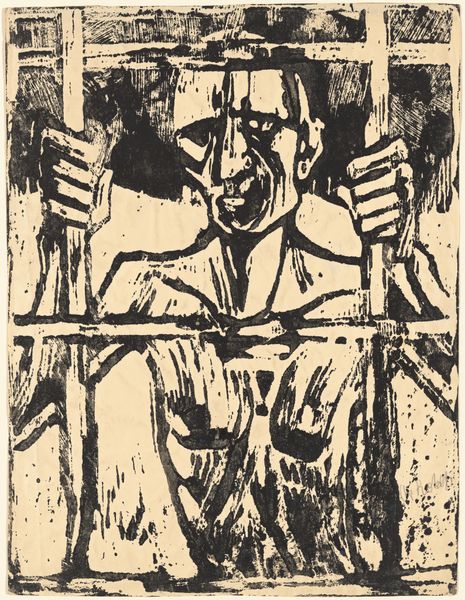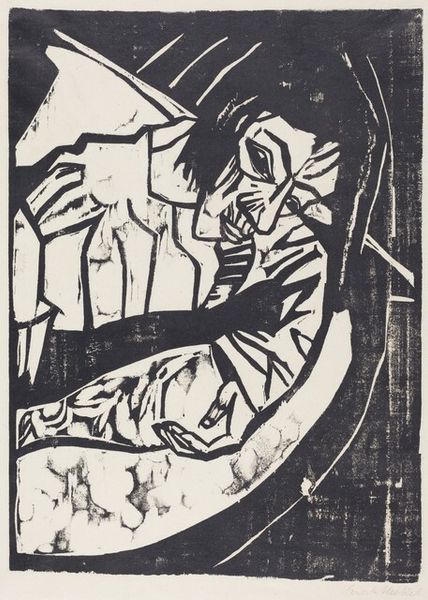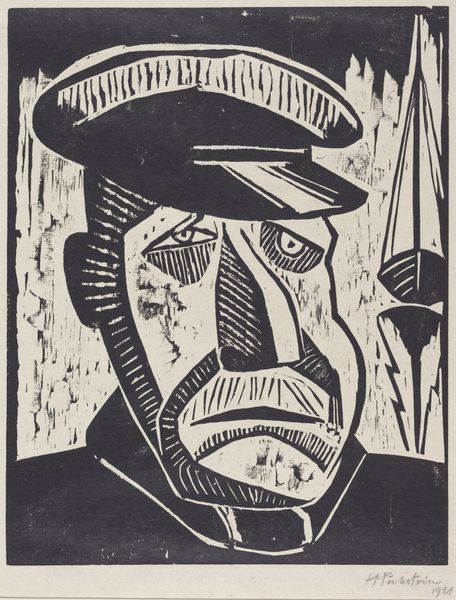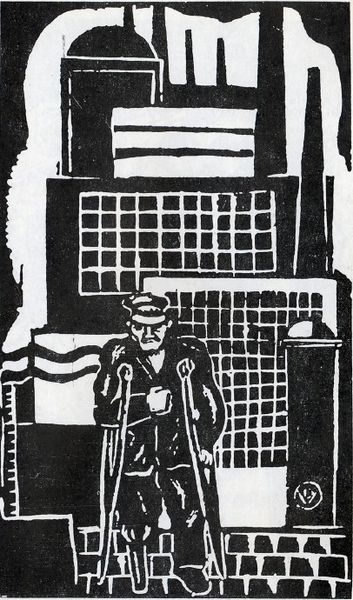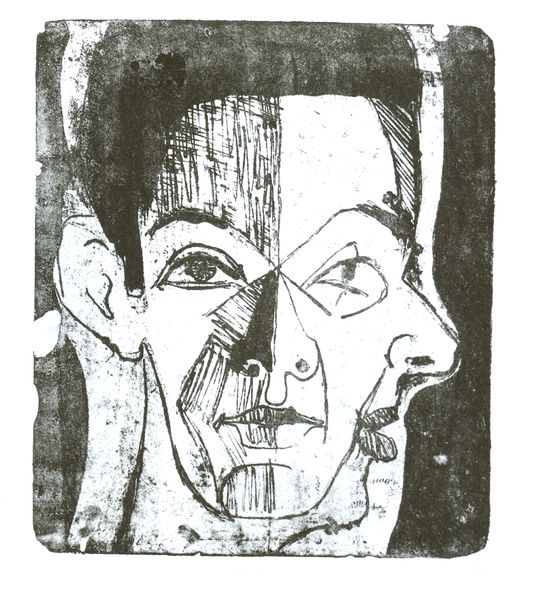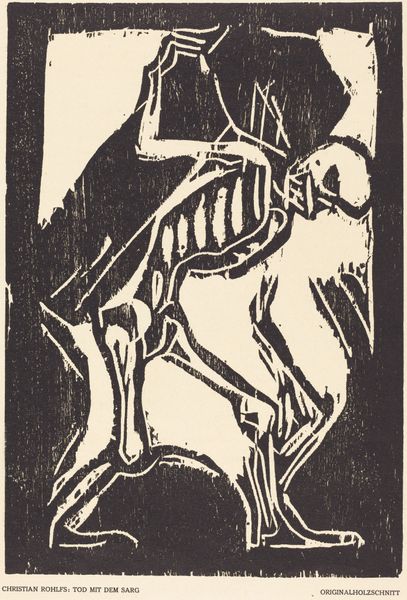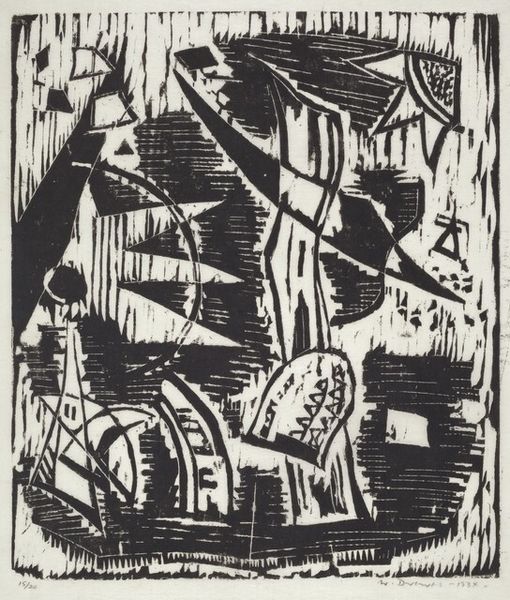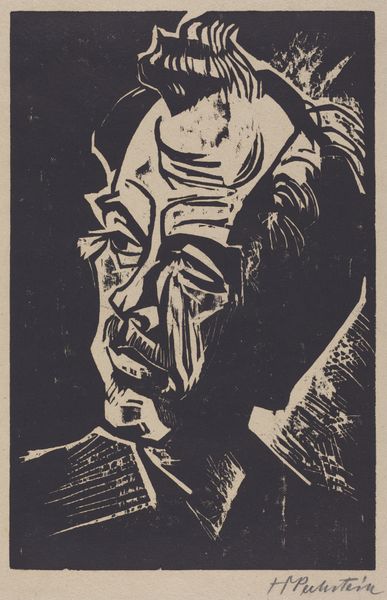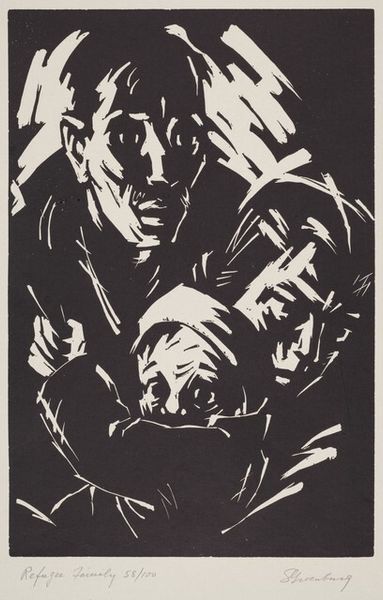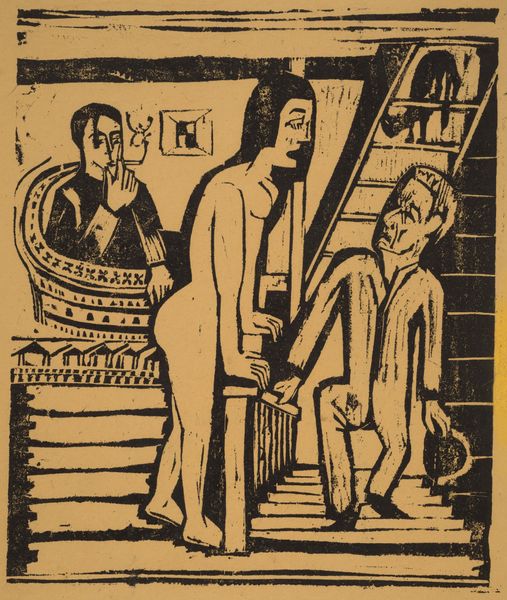
print, woodcut
#
portrait
#
narrative-art
# print
#
german-expressionism
#
figuration
#
expressionism
#
woodcut
Copyright: Public domain
Curator: Before us hangs Christian Rohlfs' woodcut print, titled "Prisoner," created in 1918. It's a powerful image, even at a small scale. Editor: My immediate reaction is one of confinement, obviously. The stark contrasts emphasize the desperation in the figure's expression. The angular lines give the piece a certain rawness and unrest. Curator: Indeed, the formal properties are striking. Notice how the strong vertical lines of the bars dominate the composition. Rohlfs masterfully uses the black ink to create areas of deep shadow and highlight the figure's anguish. The way he distorts the face – almost cubist, really – adds to the sense of inner turmoil. Editor: And 1918... think about that year. The end of World War I, widespread social upheaval, and this emerging sense of alienation, the crumbling of societal structures and human hope. This isn't just any prisoner; this is a representation of the fractured human condition in the wake of immense trauma. I can't help thinking about how notions of criminality are so wrapped up in issues of class and political resistance, which often go hand-in-hand with global conflict. Who exactly is the victim in this narrative? Who is the criminal? Curator: Your point about context is vital. Though I’d argue we should still recognize Rohlfs' technical command. The deliberate choice of the woodcut technique itself contributes to the overall feeling. The medium lends itself to these bold, expressive marks. There is a certain tension arising from this contrast between the graphic execution and the profound human theme it conveys. Editor: Absolutely, and the inherent violence of the woodcut—the carving, the gouging away— mirrors the violent stripping of humanity inflicted by war and systems of incarceration. I do also wonder whether Rohlfs wanted to critique German Expressionism as a whole? Was the German Expressionist movement’s rejection of conventional social standards at the risk of simply celebrating, even idealizing, human suffering? Curator: An interesting thought. Rohlfs' "Prisoner," viewed through either lens—formal or contextual—remains a poignant image, full of energy and open for analysis. Editor: I agree. And hopefully this artwork helps encourage visitors to think critically about not just the human condition, but also issues around societal power dynamics in times of widespread unrest.
Comments
No comments
Be the first to comment and join the conversation on the ultimate creative platform.
